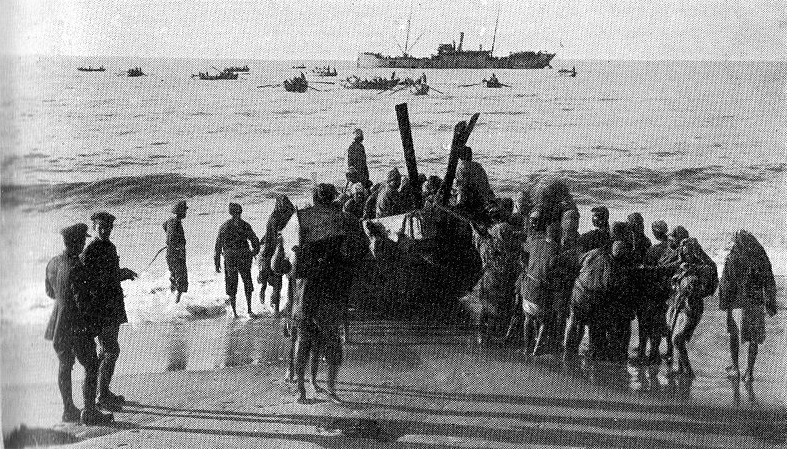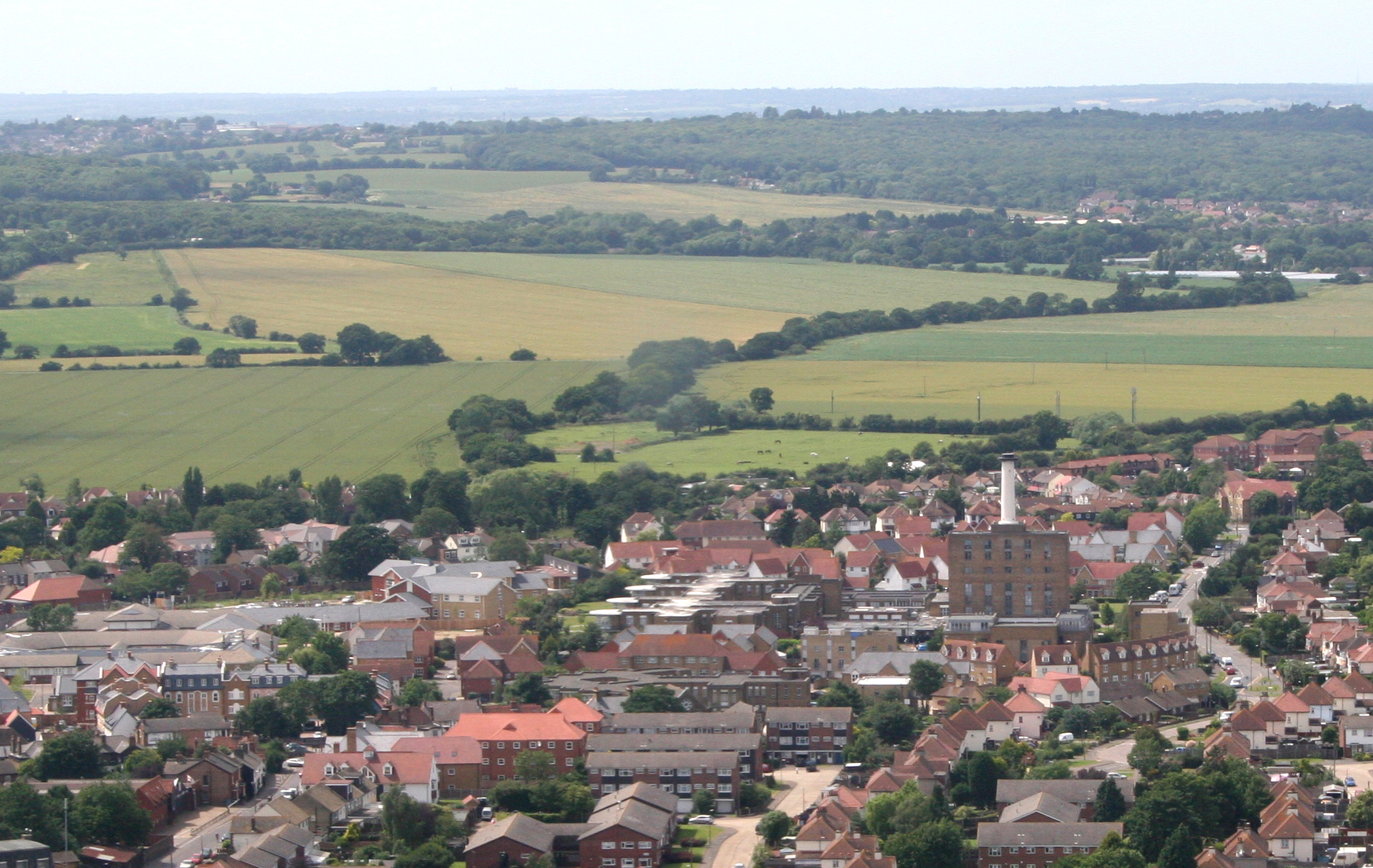 |
| The dog loved the surprise snow. |
Strictly speaking, the blog post was about her daughter, Mary Ann Valentine, but it touched greatly upon the life of the elder Mary Ann. It spoke of the confusion about her marriage with Charles Valentine: how the man usually believed to be her husband never resided with her during a census, and was even recorded as single. It also spoke of her youngest daughter, Harriet, conceived apparently during a temporary reconciliation or else out of wedlock. Both of these mysteries, since the writing of that post, have been resolved to some extent. I finally located Harriet's baptismal record, and it reports that she was baptized on 23 Jan 1846. Her parent's name is given as Mary Ann Vallentine, residing in the Union Workhouse in Bocking. Harriet was indeed illegitimate. Later I located a burial record for a Charles Valentine, age 35, in White Notley on 21 Aug 1836. Since the family lived in White Notley, this Charles Valentine makes more sense as Mary Ann's husband than the Charles Valentine who was baptized and buried in Fairstead, generally accepted as her husband. Moreover, his death date is the same year as the birth of their youngest son Charles, and just a few years before the 1841 census. Therefore, it is quite possible for him to have fathered Charles, but explains why he fails to appear in the 1841 census. In addition to all that, extrapolating his birth year from his age makes him born about 1801. Mary Ann had been born in about 1807. The other Charles Valentine was born in 1812. Without researching actual customs, just relying on my assumptions about Victorian England, it seems more likely that Mary Ann would have married a man six years older than she would a man five years younger.
These are things I knew and remembered while listening to the History Extra podcast. Naturally, when I began listening, I had no thought in my head about Mary Ann Reeve, or even family history. I merely intended to wile away a pleasant hour learning about an aspect of the Jack the Ripper cases. I was on vacation, I had yummy homemade chai, and it was snowing. There were few clothes in my suitcase suitable for snow--I had done my packing during a particularly summer-like spell, and packed accordingly--so most of the day would necessarily be spent indoors. I intended to enjoy the morning.
As soon as Hallie mentioned women, poverty, and Victorian England, my thoughts began their inclination toward Mary Ann Reeve. "The way in which 19th century society operated was that women were never designed to be breadwinners," Hallie Rubenhold stated on the podcast. Mary Ann Reeve had been obligated to become the family breadwinner. "The types of work that women could engage in was very very poorly paid and they were not designed to support a family," Hallie continued. I thought of how Mary Ann had plaited straw for a living, how little it could pay, and how grueling it could be. I remembered reading that moistening the straw in the mouth often resulted in scarring on the corner of the lip, and cringed in sympathy. Hallie Rubenhold went on:
A woman's role was instituted. It was woman as mother, woman as wife, woman as caregiver, not woman at the head of the family. And so the problem was that a lot of women found that if they were abandoned by their husbands, if their husbands died, if their husbands got ill, if their fathers died, if their fathers got ill, they could not bring in enough money to actually sustain a family.I thought of 1851, when Mary Ann's daughters, Sarah and Mary Ann, were in the Braintree Union Workhouse at Bocking. And only a few years before, when her daughter Harriet was baptized, Mary Ann the mother had been in the workhouse herself. This woman could not manage to support a family on her own.
 |
| The former Braintree Union Workhouse Robert Edwards / St. Michael's Hospital, Braintree, Essex, via Wikimedia Commons |
Speaking of the workhouse, where my thoughts had already strayed, Hallie explained, "The workhouse was designed to punish people. You went into the workhouse and you were shamed. It was shameful that all your neighbors knew that you were there, and you were taught to feel ashamed of it as well." Those poor Valentines. I'm not sure that I took the social stigma into account when I wrote the first blog post. I wrote of how the institution functioned, but not of the emotional toll it would have taken on its inmates.
Hallie Rubenhold went on to sing the praises of the census, a set of documents with which any genealogist is familiar. However, she was looking at more than just the households of her subjects. Her rhapsody reminded me that I need to look at more than just the Valentines' household; I need to look at their neighbors. What sort of economic conditions were they experiencing? Was the whole area depressed, or were the Valentines among the few? In the poor households, who were the heads? Were they mostly women and disabled men, or were most people poor?
"What were the sizes of the rooms they inhabited? What were the conditions of the houses? What was sanitation like?" asked Hallie. I remembered reading, I think in a newspaper, about the appalling sight and smell of raw sewage running along the street, past the pub, and draining into one man's field. This was in one little town in Essex, although I don't recall which one. It could have been White Notley. It was an article I read in passing, while looking for something else, but did not record anywhere. I need to go back and look at the evidence for the living conditions where Mary Ann and her family resided. Was sewage running past their door as they were getting cuts on their mouth from moistening straw? Or were they poor, but enjoying fresh air and flowers? Hallie Rubenhold mentioned poverty maps. She was speaking of London, but do poverty maps exist for other places as well? Could there be maps showing the economic conditions of Essex?
Hallie Rubenhold also said, "I think there's a lot to be said for the fact that, for example, Polly Nichols, Annie Chapman, Elizabeth Stride, and Catherine Eddowes all lived out of wedlock with men." She spoke of refuges for fallen women, and of marital separation. This reminded me again of Mary Ann Reeve. My initial conjecture (before finding the 1836 burial record) had been that she and her husband had separated. "They are still married," Hallie explained, "they separated from their husbands, there's great shame surrounding that, but in order to survive because financially they can't support themselves, they have to shack up with men." I thought of Harriet Valentine and her illegitimacy. Did Mary Ann have to resort to "shacking up" with a man? Was that how Harriet was conceived? If she were widowed, as I now suspect was the case, would she still have needed to shack up? Wouldn't she have been more likely to remarry? But she didn't remarry, and Harriet was illegitimate. Did Mary Ann, perhaps, have to resort to prostitution? Or was she simply having an affair with someone?
As you can see, some aspects of Mary Ann (Reeve) Valentine's life are coming into clearer focus, but more questions are arising. A few avenues of research have presented themselves, and perhaps they may answer many of these questions.
Sources:
1841 census of England, Essex, Fairsted parish, Witham registration district, folio 7, page 8, household of James Valentine; digital images, Ancestry, Ancestry (www.ancestry.com : accessed 19 Mar 2011); citing PRO HO 107/343/6.
1841 census of England, Essex, White Notley parish, folio 19, page 9, household of Mary Valentine; digital images, Ancestry, Ancestry (www.ancestry.com : accessed 21 Oct 2007); citing PRO HO 107/343/12.
1851 census of England, Essex, Braintree Union Workhouse, Bocking parish, Braintree registration district, folio 330, page 12, Sarah Valentine; digital images, Ancestry, Ancestry (www.ancestry.com : accessed 19 Jan 2015); citing PRO HO 107/1785.
1851 census of England, Essex, Fairsted parish, Witham registration district, folio 377, page 13, household of James Valentine; digital images, Ancestry, Ancestry (www.ancestry.com : accessed 19 Mar 2011); citing PRO HO 107/1783.
1851 census of England, Essex, White Notley parish, village of White Notley, Braintree registration district, folio 426, page 10, household of Mary Ann Valentine; digital images, Ancestry, Ancestry (www.ancestry.com : accessed 8 Feb 2010); citing PRO HO 107/1785.
1861 census of England, Essex, White Notley parish, Braintree registration district, folio 157A, page 14, household of Mary Ann Valentine; digital images, Ancestry, Ancestry (www.ancestry.com : accessed 8 Feb 2010); citing PRO RG 9/1115.
Ancestry, “England, Select Births and Christenings, 1538-1975,” database, Ancestry, Ancestry (www.ancestry.com : accessed 19 Jan 2015), entry for Charles Valentine’s 1836 baptism; citing FHL Film Number 560909.
Ancestry, “England, Select Births and Christenings, 1538-1975,” database, Ancestry, Ancestry (www.ancestry.com : accessed 19 Jan 2015), entry for Mary Ann Reeve’s 1807 baptism; citing Boreham, Essex, England, reference; FHL microfilm 1,702,171.
Ancestry, “England, Select Births and Christenings, 1538-1975,” database, Ancestry, Ancestry (www.ancestry.com : accessed 19 Jan 2015), entry for Mary Ann Valentine’s 1834 baptism; citing FHL Film Number 560909.
Ancestry, “England, Select Births and Christenings, 1538-1975,” database, Ancestry, Ancestry (www.ancestry.com : accessed 19 Jan 2015), entry for Sarah Valentine’s 1833 baptism; citing FHL Film Number 560909.
Ancestry, “England, Select Births and Christenings, 1538-1975,” database, Ancestry, Ancestry (www.ancestry.com : accessed 19 Jan 2015), entry for William Valentine’s 1830 baptism; citing FHL Film Number 1702171.
Clarke, Andrew. “Strawplaiting.” Web log post. The Hysterical Hystorian. The Foxearth and District Local History Society, 12 June 2005. Web. Accessed 1 Apr. 2011.
FamilySearch, "England, Essex Parish Registers, 1538-1997," database, Church of Jesus Christ of Latter-Day Saints, FamilySearch (www.familysearch.org : accessed 23 Feb 2019), entry for Charles Valentine's 21 Aug 1836 burial; citing, White Notley, Essex, England, Essex Record Office, England; FHL microfilm 560,909.
St. Michael the Archangel (Braintree, Essex, England), Bishop's transcripts for Braintree, "Baptisms, 1831-1833, 1844-1864; burials, 1831-1833, 1844-1863; marriages, 1831-1833," Harriet Vallentine's 1846 baptismal record, p. 78, no. 620; digital images, Church of Jesus Christ of Latter-Day Saints, FamilySearch (www.familysearch.org : accessed 23 Oct 2017).









